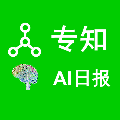Ocean-going platforms are integrating high-resolution camera feeds for observation and navigation, producing a deluge of visual data. The volume and rate of this data collection can rapidly outpace researchers' abilities to process and analyze them. Recent advances in machine learning enable fast, sophisticated analysis of visual data, but have had limited success in the oceanographic world due to lack of dataset standardization, sparse annotation tools, and insufficient formatting and aggregation of existing, expertly curated imagery for use by data scientists. To address this need, we have built FathomNet, a public platform that makes use of existing (and future), expertly curated data. Initial efforts have leveraged MBARI's Video Annotation and Reference System and annotated deep sea video database, which has more than 7M annotations, 1M framegrabs, and 5k terms in the knowledgebase, with additional contributions by National Geographic Society (NGS) and NOAA's Office of Ocean Exploration and Research. FathomNet has over 100k localizations of 1k midwater and benthic classes, and contains iconic and non-iconic views of marine animals, underwater equipment, debris, etc. We will demonstrate how machine learning models trained on FathomNet data can be applied across different institutional video data, (e.g., NGS' Deep Sea Camera System and NOAA's ROV Deep Discoverer), and enable automated acquisition and tracking of midwater animals using MBARI's ROV MiniROV. As FathomNet continues to develop and incorporate more image data from other oceanographic community members, this effort will enable scientists, explorers, policymakers, storytellers, and the public to understand and care for our ocean.
翻译:海洋平台正在整合用于观测和导航的高分辨率摄像材料,为观测和导航提供大量视觉数据。这种数据收集的数量和速度可以迅速超过研究人员处理和分析这些数据的能力。最近机器学习的进展使得对视觉数据进行快速、精密的分析,但在海洋世界中由于缺少数据集标准化、批注工具稀少、现有、由专家整理的、供数据科学家使用的小型图像格式化和汇总不足,因此在海洋世界中取得了有限的成功。为了满足这一需要,我们建立了FathomNet,这是一个利用现有(和未来)专家整理数据的自动化公共平台。最初的努力利用了MBARI的视频注释和参考系统以及一个附加说明的深海视频数据库,该数据库有超过7M图示、1M框架grabs和5k条件,而国家地理学会和诺阿海洋探索与研究办公室为现有、海洋遥感网络1k中间水和海底课程提供了超过100k的本地化服务,并包含了对海洋动物、水下网络的图像和图象界的标志性和非气候性观点。我们将继续利用这一系统进行数据学习。





